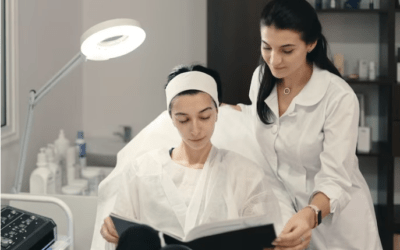LED light therapy, often referred to as light therapy, has gained prominence in recent years as a non-invasive and versatile approach to various skin treatments. This technology utilizes light-emitting diodes (LEDs) to deliver specific wavelengths of light, such as red, blue, and near-infrared, to the skin. The regulatory landscape surrounding LED light therapy is crucial for ensuring the safety and efficacy of these treatments. This article explores the regulatory frameworks and standards governing LED light therapy devices globally, discussing criteria, safety measures, and regional variations.
LED Light Therapy: An Overview
LED light therapy involves exposing the skin to different wavelengths of light to trigger various therapeutic effects. The treatment has gained popularity for addressing diverse skin concerns, including acne, fine lines, and skin rejuvenation. LED lights emit specific colors, and each color has unique properties that target specific skin conditions. Notable colors include red and blue, with blue LED light therapy being particularly recognized for its efficacy in treating acne.
Regulatory Standards for LED Light Therapy Devices
Criteria for Manufacturers
Manufacturers of LED light therapy devices are subject to stringent criteria to ensure the safety and effectiveness of their products. Regulatory bodies mandate adherence to specific guidelines related to device design, manufacturing processes, and quality control. Compliance with these criteria is essential to obtaining approvals and certifications necessary for marketing and selling these devices.
Safety Measures
Safety is a paramount concern in LED light therapy, considering its direct interaction with the skin. Regulatory standards encompass measures to prevent adverse effects and ensure user safety. These may include restrictions on the intensity of light, recommended exposure durations, and guidelines for device design to prevent overheating or other potential hazards.
Regional Variations in Regulatory Standards
The regulatory landscape for LED light therapy varies across regions, with different countries having distinct standards and approval processes. For example, the requirements set by the FDA (Food and Drug Administration) in the United States may differ from those of the European Medicines Agency (EMA) in Europe. Manufacturers must navigate these variations to ensure compliance with each jurisdiction’s specific regulations.
Ongoing Developments in LED Light Therapy Regulations
As technology advances and the popularity of LED light therapy grows, ongoing developments in regulations are inevitable. Regulatory bodies continually assess the safety and efficacy of these treatments, leading to potential updates in standards. Discussions within the regulatory landscape may focus on refining existing criteria, incorporating new research findings, or addressing emerging safety concerns.
LED Light Therapy Treatments: A Closer Look
Treating Acne with Blue LED Light Therapy
One of the most well-established applications of LED light therapy is in the treatment of acne, particularly through the use of blue LED light. This specific wavelength targets acne-causing bacteria, reducing inflammation and promoting the healing process. Regulatory standards for acne treatments often emphasize the need for clinical and histological evaluation to ensure efficacy and safety.
Red LED Light Therapy for Skin Rejuvenation
Red LED light therapy is renowned for its skin rejuvenation properties. It stimulates collagen production, improves intradermal collagen density, and reduces fine lines and wrinkles. Regulatory frameworks for red LED light therapy may focus on the frequency and duration of treatments required, ensuring optimum results with minimal risks.
Near Infrared Light Treatment and Wound Healing
Near-infrared light, while not as commonly associated with skin treatments, plays a role in wound healing. Some LED light therapy devices incorporate near-infrared wavelengths to enhance the healing process, particularly for wounds or injuries. The regulatory considerations for these devices may involve specific guidelines for addressing various depths of the skin and promoting the regeneration of skin cells.
Benefits of LED Light Therapy and its Impact on Skin Conditions
LED light therapy offers a range of benefits, making it a sought-after option for addressing various skin concerns. The technology’s ability to target specific issues, such as acne-causing bacteria and inflammation, has positioned it as a versatile and effective solution. The non-invasive nature of LED light therapy treatments also contributes to its popularity, providing users with a painless alternative to other skin treatments.
The Role of LED Lights in Skin Treatments
LED lights, especially in the blue spectrum, have demonstrated efficacy in eliminating acne-causing bacteria. This targeted approach makes LED light therapy a valuable option for individuals struggling with acne and other skin conditions. The use of LED lights in skin treatments aligns with the growing demand for non-invasive and accessible solutions to common dermatological issues.
Wound Healing and LED Light Therapy
Wound healing is a complex process involving various cellular and biochemical mechanisms. LED light therapy’s role in this process is noteworthy, as it can enhance the healing of wounds through the stimulation of skin cells. The wavelengths emitted by LED lights contribute to the acceleration of the healing process, making it a valuable adjunct to traditional wound care.
Blue LED Light Therapy and Acne Treatment
Blue LED light therapy, in particular, has shown promise in treating acne by targeting the bacteria responsible for breakouts. Regulatory considerations for devices offering blue LED light therapy may focus on the specificity of the wavelength, ensuring it effectively reaches the depths of the skin where acne-causing bacteria reside. This precision is essential for achieving optimal results in acne treatment.
Skin Rejuvenation and the Role of Red LED Light
Red LED light’s role in skin rejuvenation is multifaceted, involving collagen stimulation and improvements in intradermal collagen density. Regulatory considerations for red LED light therapy devices may include guidelines on treatment frequency and duration, ensuring that users receive the optimal benefits without compromising safety. The focus on these parameters contributes to the reliability of red LED light therapy as a skin rejuvenation option.
Addressing Skin Conditions with LED Therapy
LED therapy has shown efficacy in addressing various skin conditions beyond acne, ranging from fine lines and wrinkles to sun damage. Regulatory standards for devices offering LED therapy for these conditions may encompass a comprehensive evaluation of safety and efficacy. The diversity of skin conditions that LED therapy can target highlights its versatility and potential as a treatment modality across different dermatological concerns.
Blue LED Light and Acne-Causing Bacteria: A Precision Approach
The precision offered by a blue LED light in targeting acne-causing bacteria distinguishes it as a specific and effective treatment. Regulatory guidelines may underscore the importance of accurate targeting, ensuring that the wavelength and intensity of blue LED light align with the specific characteristics of acne-causing bacteria. This precision minimizes the risk of collateral damage and enhances the overall safety of blue LED light therapy for acne.
Red LED Light Therapy: Beyond Fine Lines and Wrinkles
Red LED light therapy’s impact extends beyond addressing fine lines and wrinkles, encompassing broader aspects of skin health. Regulatory considerations for red LED light therapy may delve into its role in promoting overall skin vitality and health. This comprehensive approach aligns with the holistic benefits that users seek in skin rejuvenation treatments, contributing to the appeal of red LED light therapy.
LED Therapy: A Non-Invasive Approach to Skin Concerns
The non-invasive nature of LED therapy sets it apart as a user-friendly option for individuals seeking skin treatments. Regulatory standards for non-invasive treatments may focus on ensuring minimal risks and side effects, making LED therapy an attractive choice for those looking to address skin concerns without undergoing invasive procedures. The emphasis on safety in regulatory guidelines aligns with the growing demand for accessible and low-risk skin treatment options.
Skin Concerns and LED Therapy: A Comprehensive Solution
LED therapy’s versatility in addressing various skin concerns positions it as a comprehensive solution for individuals with diverse dermatological issues. Regulatory standards may underscore the need for devices to undergo rigorous testing and demonstrate efficacy across multiple skin conditions. This comprehensive approach aligns with the evolving landscape of dermatological treatments, where users seek versatile solutions that can address a range of skin concerns with a single modality.
LED Light Therapy: A Growing Trend in Skin Treatments
The growing trend of LED light therapy as a mainstream treatment for various skin concerns necessitates ongoing attention to regulatory standards. As the popularity of LED therapy increases, regulatory bodies may engage in discussions to refine existing guidelines and incorporate new findings. These discussions are essential for adapting regulations to the evolving landscape of dermatological treatments and ensuring that LED light therapy continues to meet the highest standards of safety and efficacy.
Conclusion
LED light therapy has emerged as a versatile and non-invasive option for addressing a myriad of skin concerns. The regulatory landscape and standards governing LED light therapy play a crucial role in ensuring the safety and effectiveness of these treatments. Manufacturers must adhere to specific criteria and safety measures, navigating regional variations in regulatory standards. Ongoing developments in regulations reflect the dynamic nature of the field, with discussions focused on refining existing guidelines and incorporating new research findings. As LED light therapy cements its place in mainstream skin treatments, adherence to robust regulatory standards remains paramount to its continued success and acceptance in the dermatological community and among users seeking safe and effective solutions to their skin woes.



